Kinako mochi is a chewy and delicious snack made with mochi (sweet rice cake) and kinako (roasted soybean flour). It's a popular dessert in Japan and is often enjoyed with green tea. While making kinako mochi traditionally can be a bit time-consuming and tricky, you'll be happy to know that there's an easy and quick way to make it in the microwave! Keep reading to learn how you can make this yummy treat in just a few minutes, so you can enjoy it anytime you want.
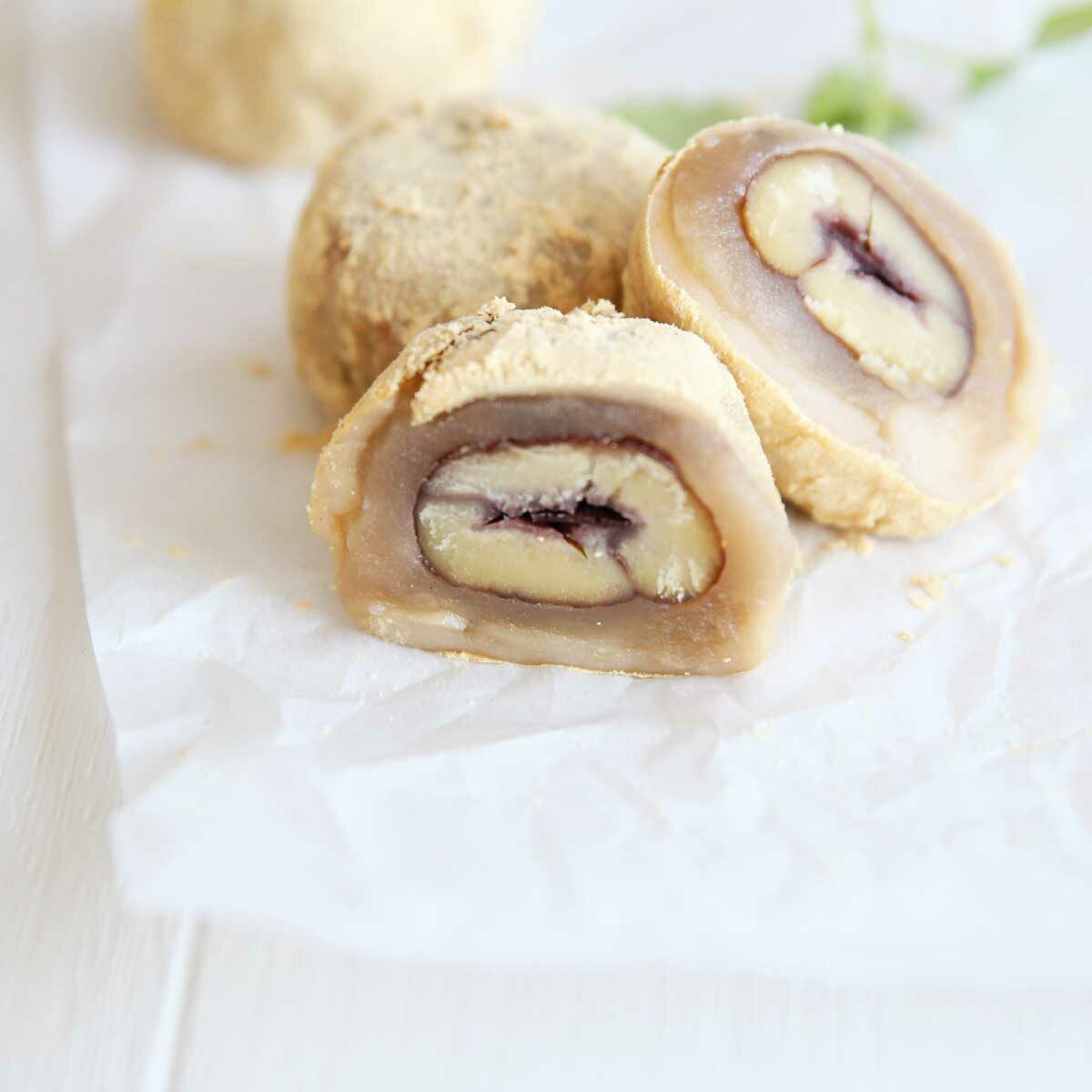
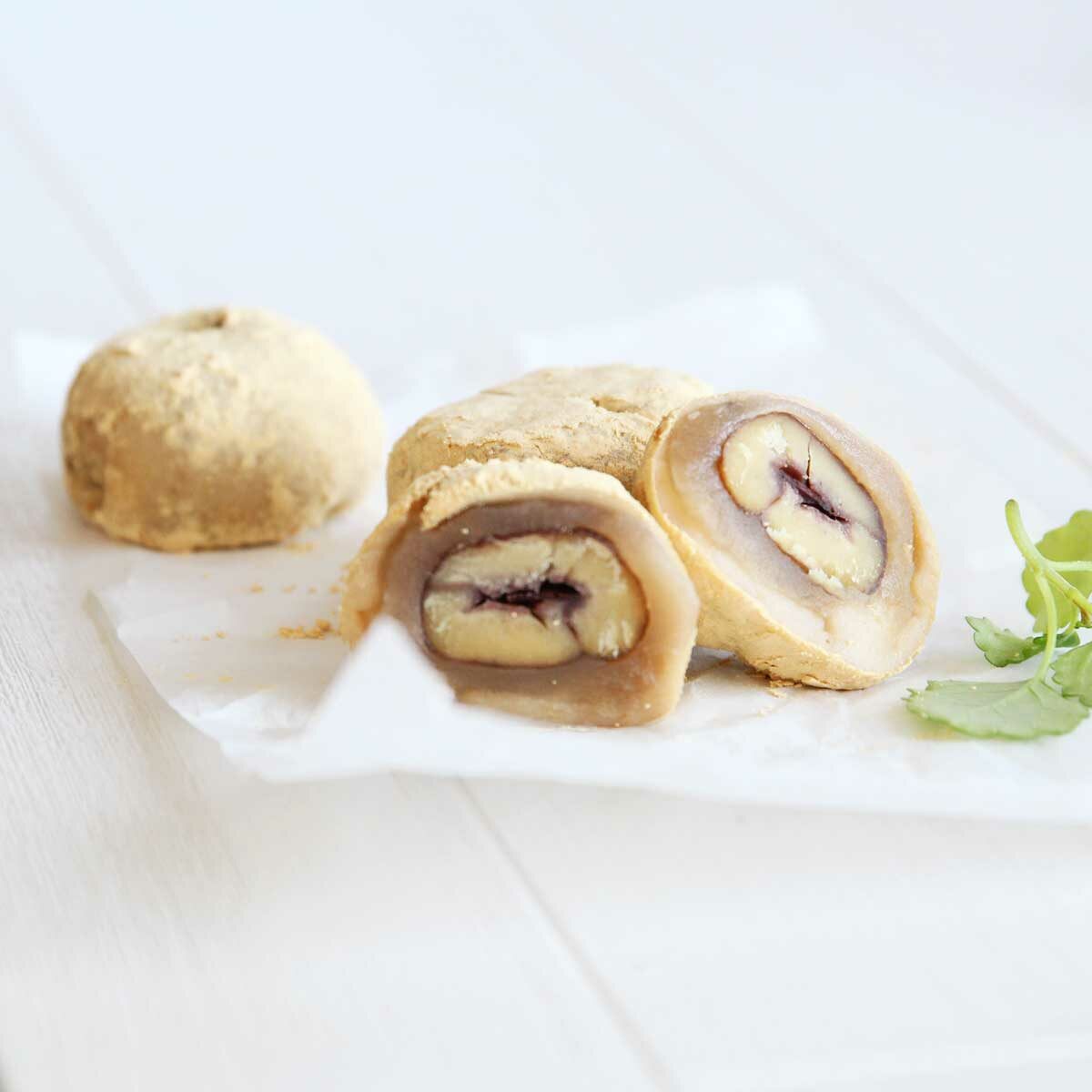
Ingredients Used to Make Cashew Butter Kinako Mochi Mochi
**I've linked some of these ingredients to amazon.com to give you an idea of what they are, but you should also be able to find them in your local grocery store (usually, the natural & organic food section). They are also affiliate links, which means that I earn a commission as an Amazon Associate if you decide to purchase the items. The price will be the same for you, link or no link 🙂
- Glutinous Rice Flour - this goes by many names. You'll see Glutinous Rice Flour and Mochiko Flour (my favorite brand) in Asian grocery stores, and Sweet White Rice Flour in most other stores. ***Please note that regular white rice flour or brown rice flour is NOT the same thing as glutinous rice flour!!!
- Milk of Choice – I used unsweetened almond milk, but any milk (dairy or dairy free) works in this recipe.
- Sugar of Choice – I used monk fruit sweetener in this recipe to keep this recipe low-sugar and low carb, but raw cane sugar, coconut, date, and maple sugars are perfectly acceptable substitutes.
- Cashew Butter - like this one. I like cashew butter for its mild, buttery flavor and creamy texture. It's perfect for this recipe, but you're free to use other natural nut butters like almond butter, pecan butter, walnut butter, cashew butter, mixed nut butter, or even seed butter like sunflower. So many choices!
What I used for Filling
You can use any mochi filling of choice, such as store-bought red bean paste, white bean paste, or homemade mung bean paste.
In this recipe, I’m using a combination of white bean paste and chestnuts. To make, prepare the filling by wrapping each cooked chestnuts around 2 Tbsp of sweetened white bean paste (shiro-an). More details below on the Step by Step.
- Chestnuts (optional) – these can be bought online, pre roasted, shelled and ready to eat. You can find them on Amazon, like below:
Step by Step
How to Make Cashew Butter Kinako Mochi in the Microwave
STEP 1
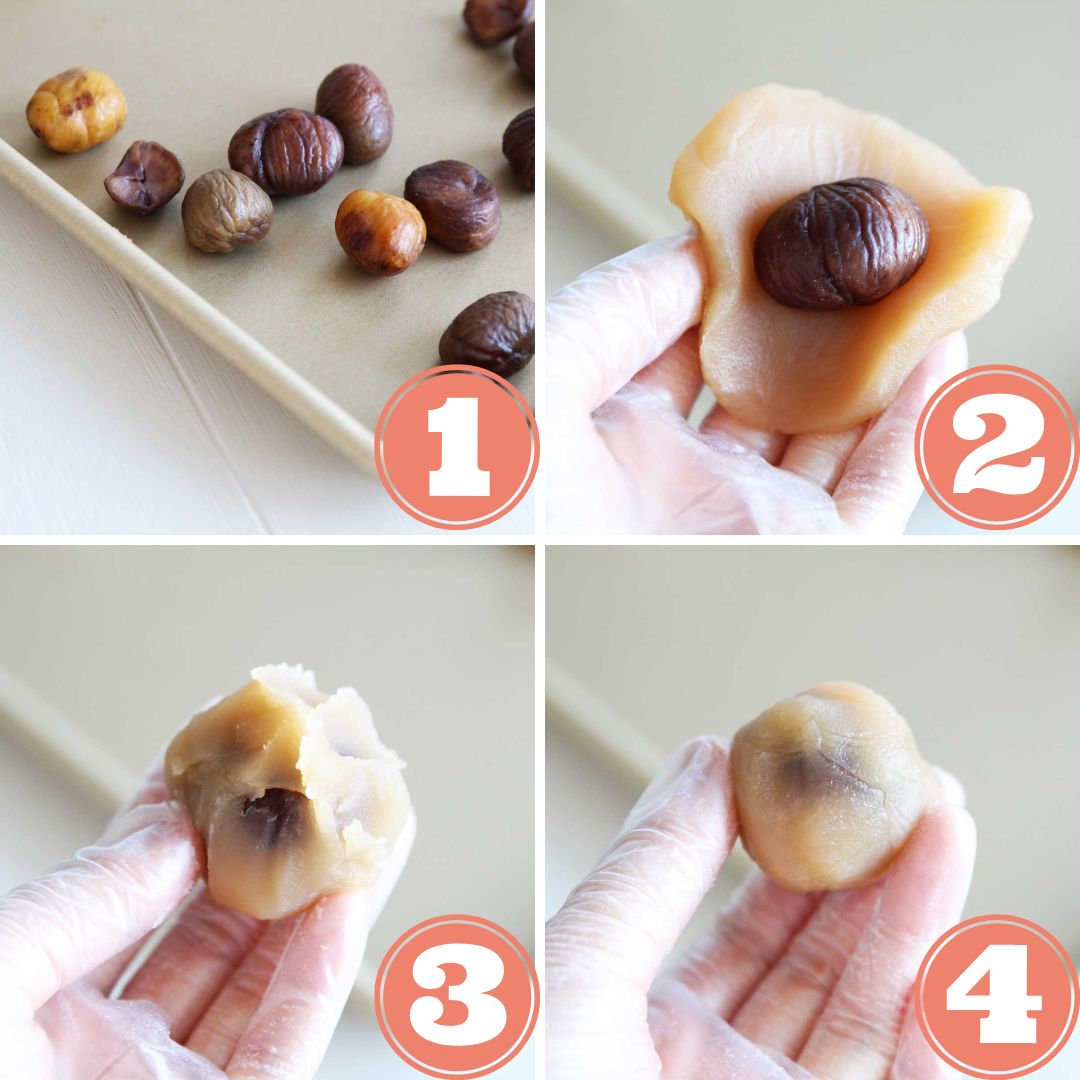
Prep the filling first: wrap each chestnut with 2 Tbsp of red or white bean paste. Set aside.
STEP 2
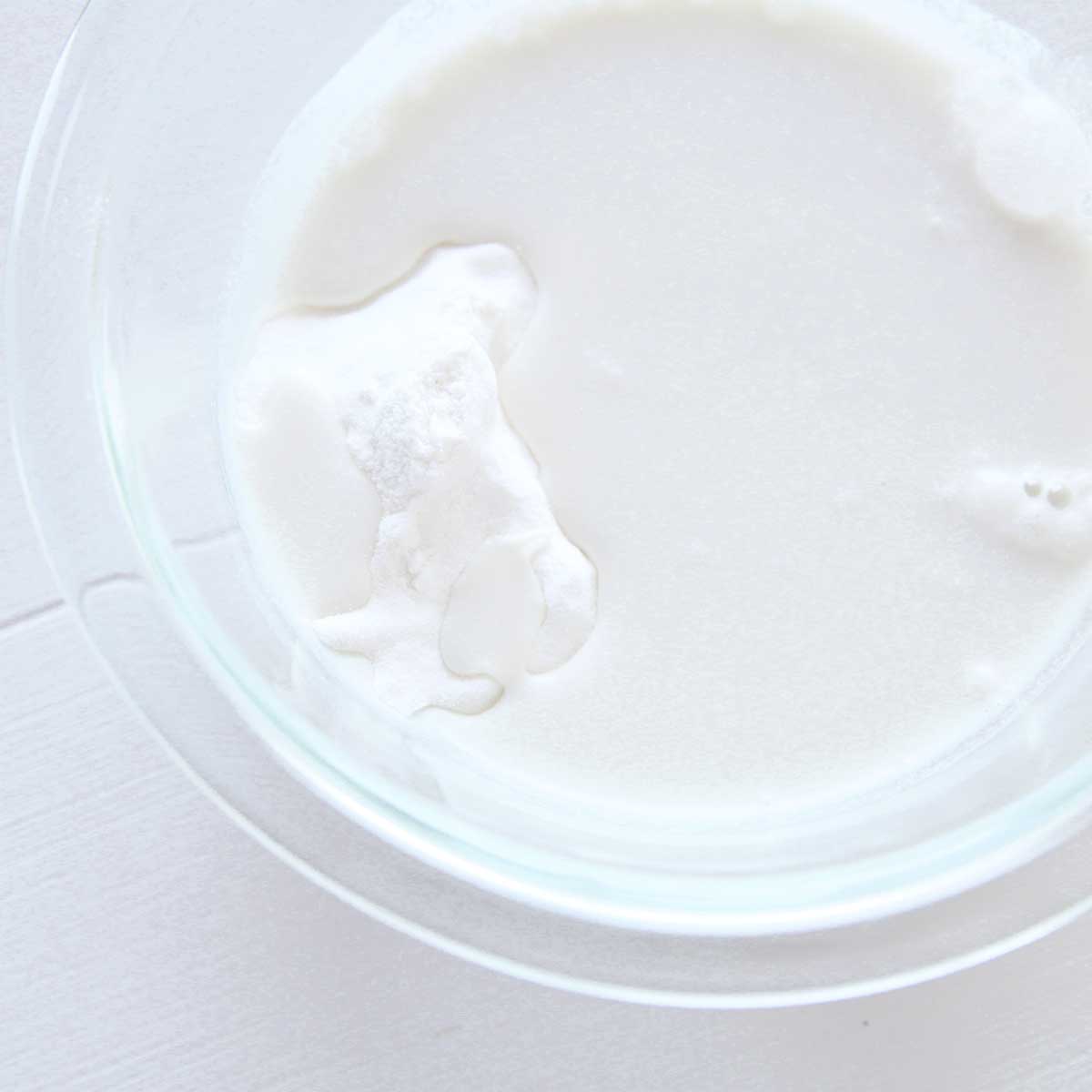
In a microwave-safe bowl (preferably glass, like pyrex), mix the sweet rice flour with sugar (I used raw cane sugar) and almond milk.
STEP 3
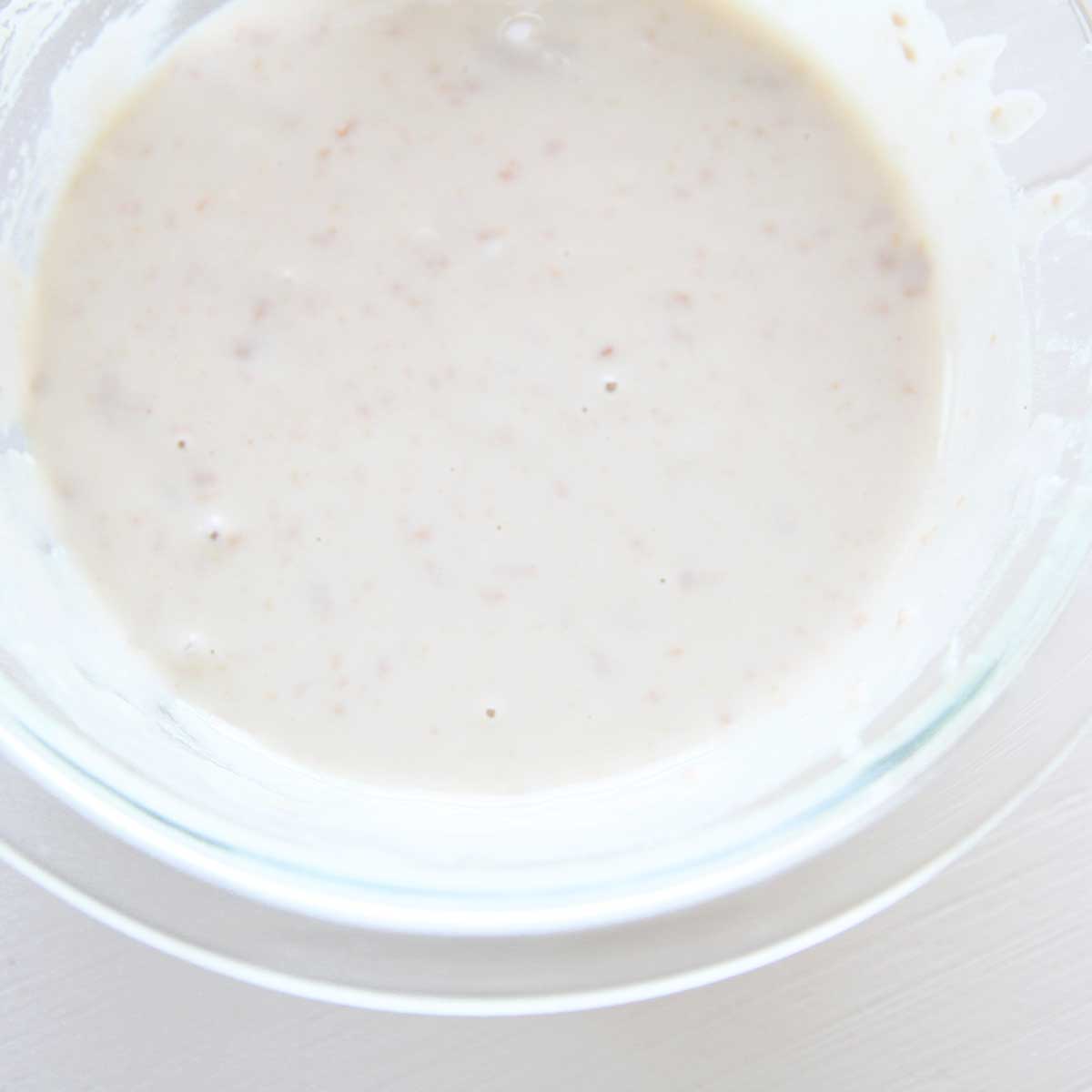
Add cashew butter. Microwave the combined dough in the microwave for 90 seconds
STEP 4
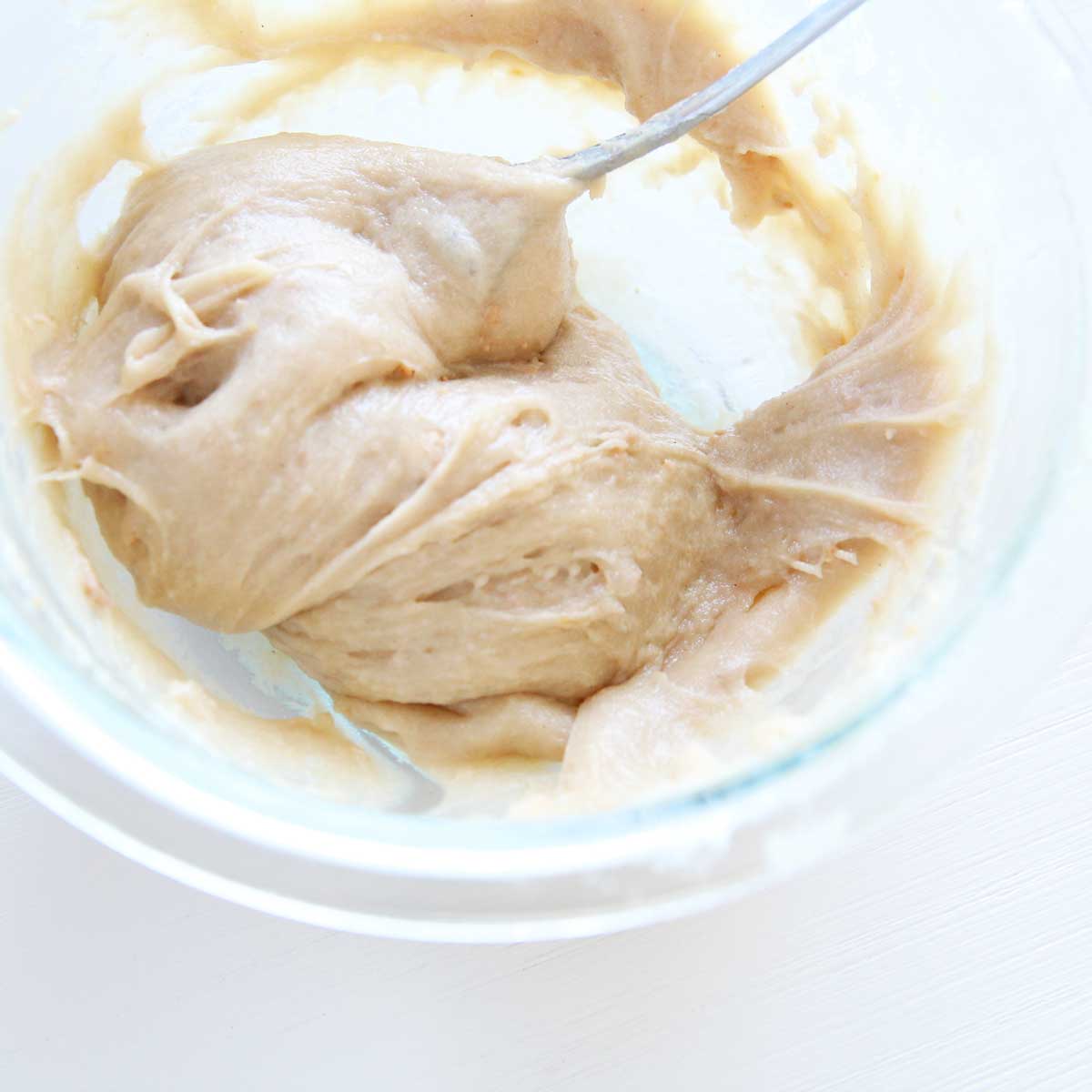
Use a SOLID METAL spoon (wooden spoons might break!) to stir the cooked mochi so that the cooked and uncooked parts are evenly mixed
Return to microwave and heat for additional 1 minute. You'll know when it is ready when the dough is slightly translucent
STEP 5
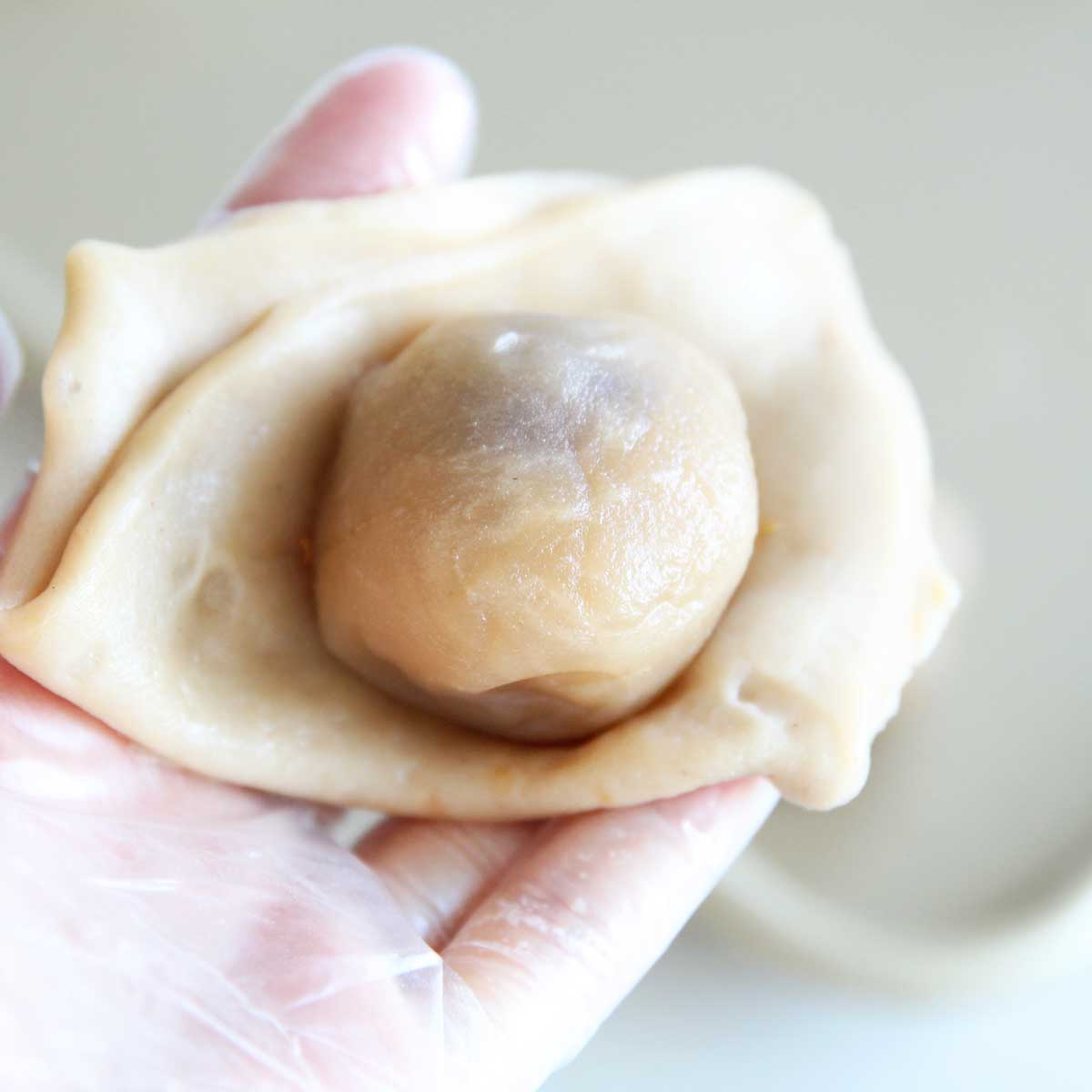
Scrape the hot mochi dough onto a baking pan greased with olive oil.
NOTE: Handle with care, or use vinyl gloves, as the mochi dough will be HOT. Unfortunately, you have to work quickly to shape the mochi before they cool.
Use kitchen shears/ scissors to cut the mochi into 5 pieces, and wrap the mochi dough around the prepared filling.
STEP 6
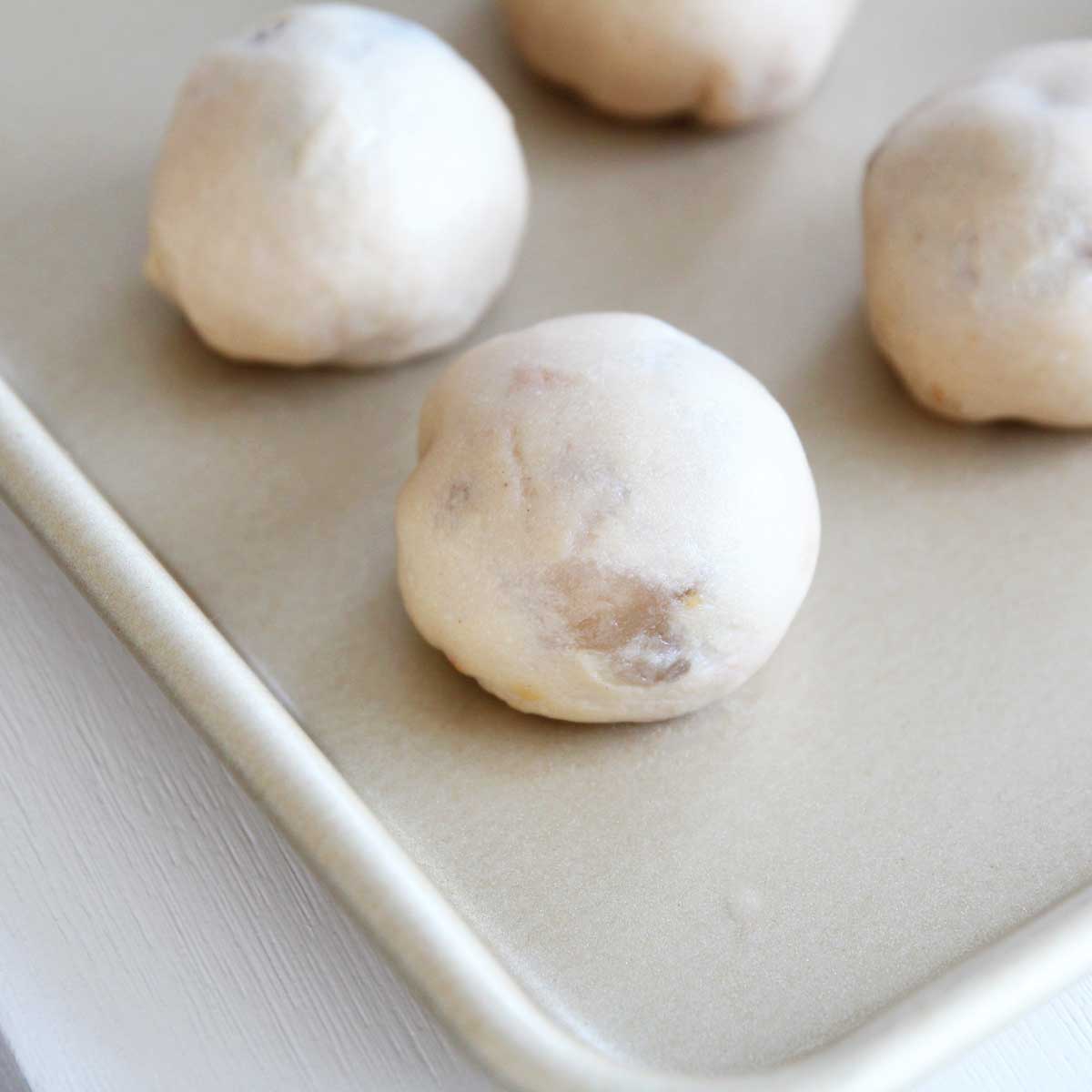
Place the mochi seam side down.
STEP 7
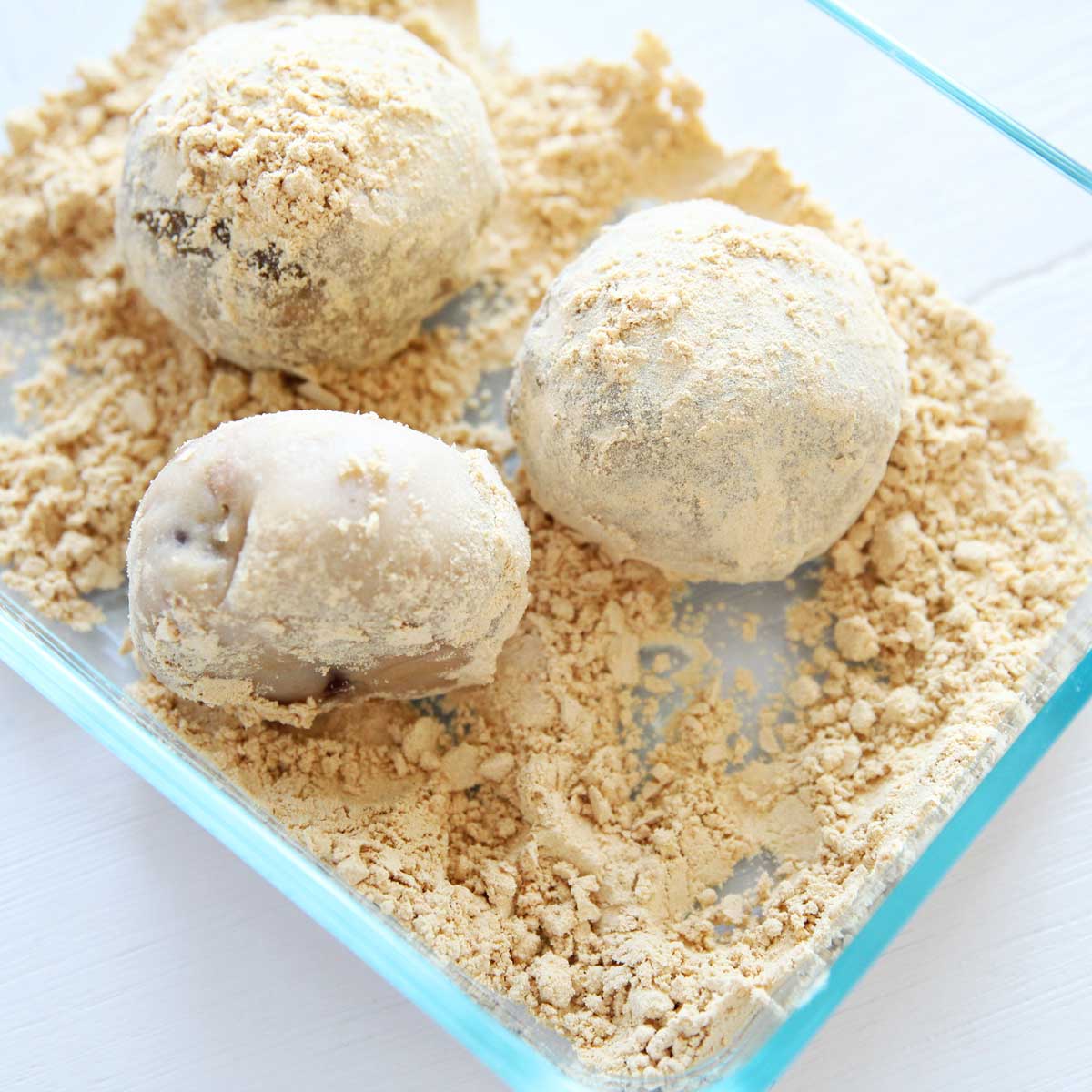
Enjoy as is, or coat the mochi in kinako (roasted bean powder).
STEP 8
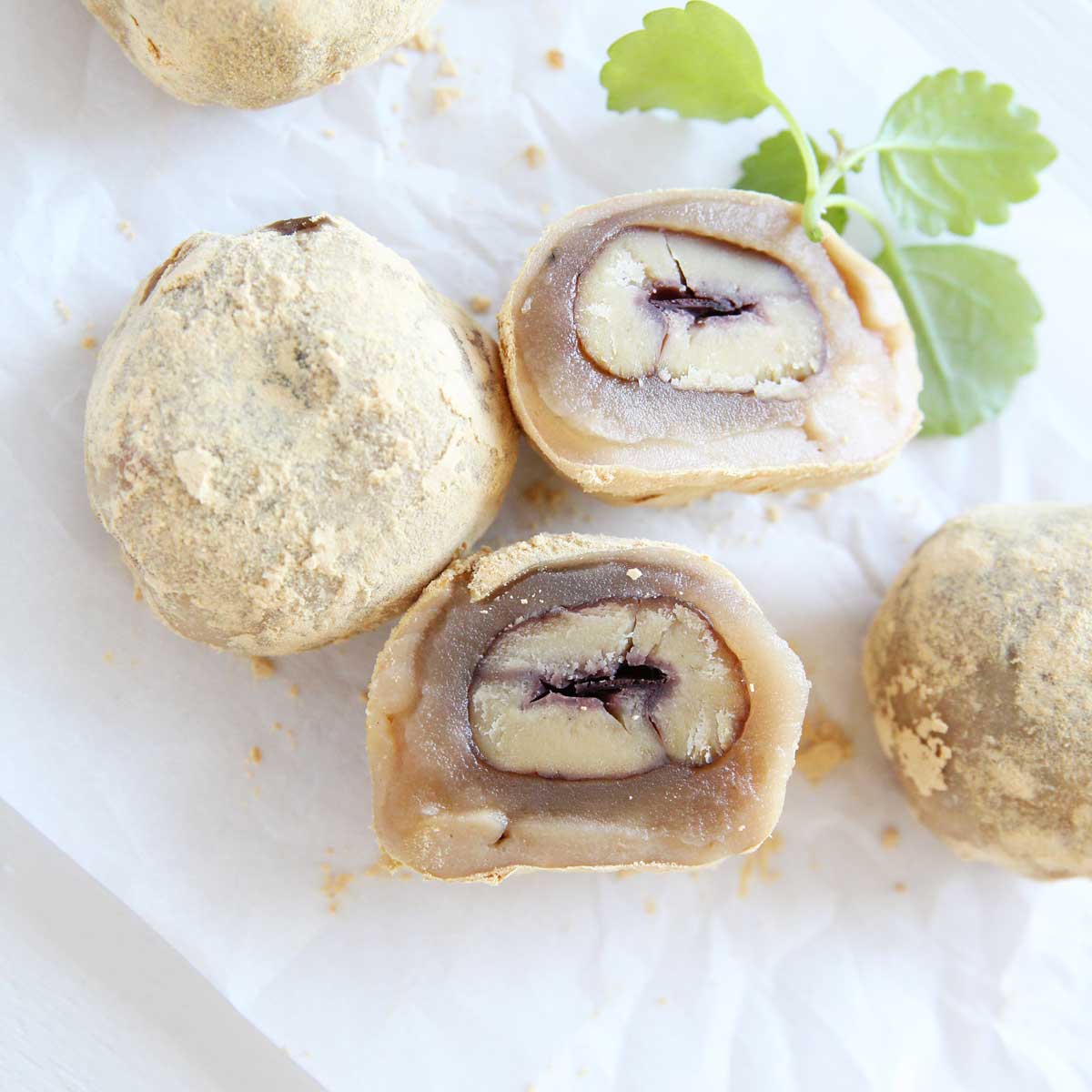
Enjoy!
Recipe Variations and Optional Add Ins:
- You can add different flavorings to the mochi dough before cooking. For example, you can add either a teaspoon of coffee extract or espresso powder, cocoa, cinnamon or Cardamom Powder. They're not typically added to a traditional recipe, but you're welcome to experiment!
Different Mochi Filling Options
If you want to enjoy mochi with a variety of fillings, there are many fun and delicious mochi filling options to choose from. Here are some ideas!
Koshi-an (also called sweetened red bean paste) – on Amazon, here
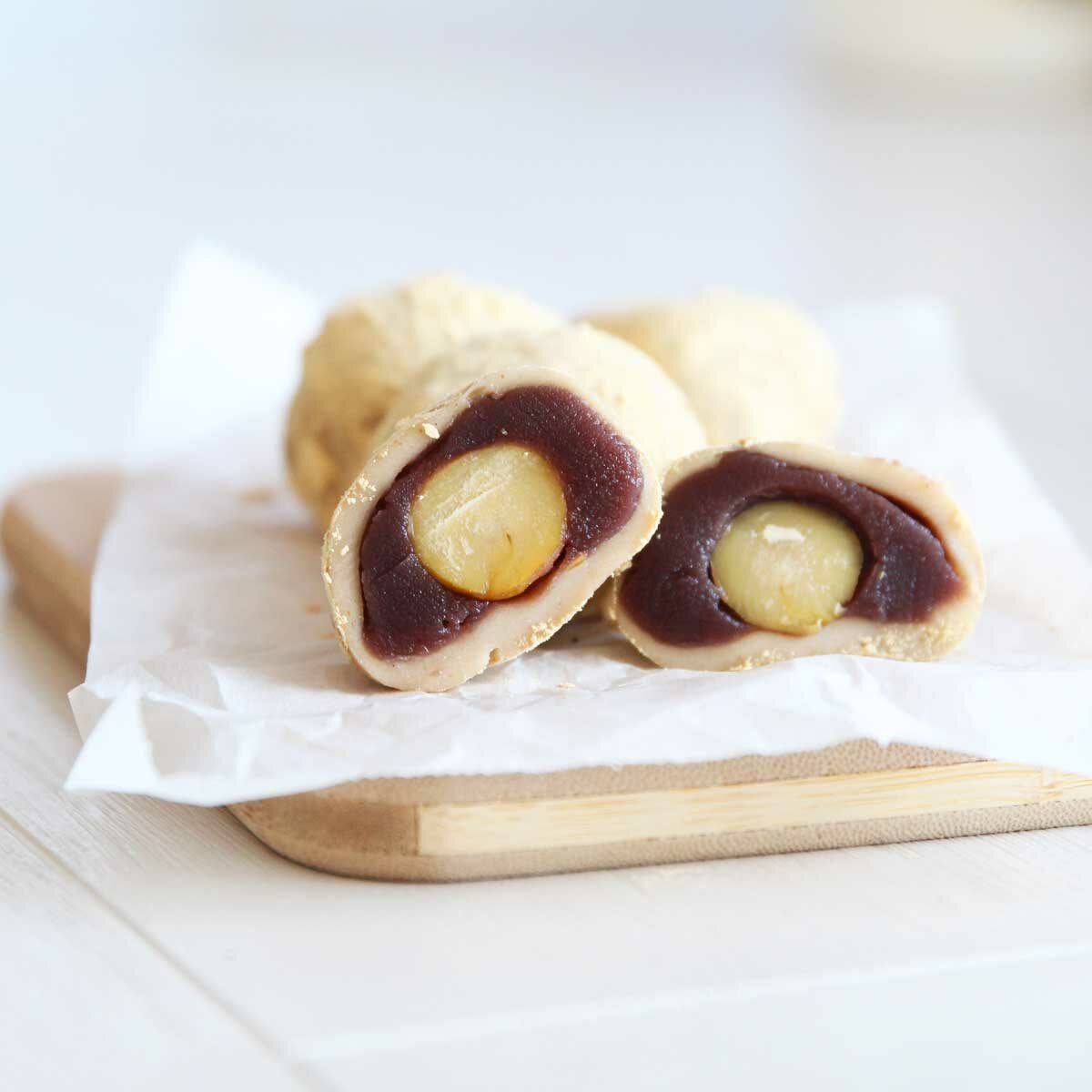
How to Store Cashew Butter Kinako Mochi
- The mochi can be kept covered at room temperature for up to 24 hours and in the fridge for about 1 day. For longer storage, I would freeze the mochi in a plastic freezer bag or an airtight container, then defrost at room temperature when ready to eat.
- The reason I don't recommend storing them in the fridge for longer storage is that mochi usually tend to develop a weird waxy, hard texture when stored in the fridge. So eat within a day or freeze for best results.

Final Tips
- Use a solid metal spoon (wooden spoons might break!) to stir the cooked mochi mixture so that the cooked and uncooked parts are evenly mixed
- Use a microwave-safe bowl, preferably glass like pyrex

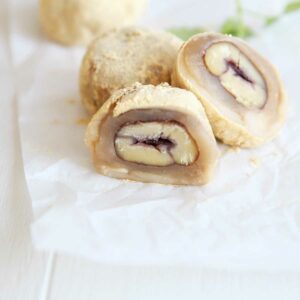
Healthy Cashew Butter Kinako Mochi with Chestnut Filling
Ingredients
Mochi Ingredients
- ½ cup mochiko flour, sweet rice or glutinous rice flour about 72 g
- 1 ½ Tbsp granulated sugar , or a sugar free alternative, such as granulated monk fruit sweetner
- ½ cup almond milk, regular milk or water
- 2 Tbsp cashew butter , 32 g
Filling
- 250 g sweetened white bean paste (shiro an)
- 5 cooked chestnuts
Instructions
Prepare the filling
- Prepare the filling by wrapping each cooked chestnuts around 2 Tbsp of sweetened white bean paste (shiro-an). Set aside.
Make the Mochi Dough
- In a microwaveable glass bowl (like Pyrex), mix the glutinous rice flour, sugar and almond milk.
- Whisk in cashew butter
- Microwave the mochi mixture for 90 seconds.
- Use a SOLID METAL spoon (wooden spoons might break!) to stir the cooked mochi so that the cooked and uncooked parts are evenly mixed
- Microwave the mochi mixture again, this time for 60 seconds.
- Pour the cooked mochi onto the baking pan lightly greased with oil, and flatten using the palm of your hands once it cools enough to handle. The mochi dough will be HOT. Either use gloved hands, or wait until it cools enough to handle.
- Cut the mochi into 5 pieces using kitchen shears or scissors
Wrap with Filling
- Wrap the mochi dough around the prepared filling, pinching the end of the dough with your fingers to seal.
- Enjoy!

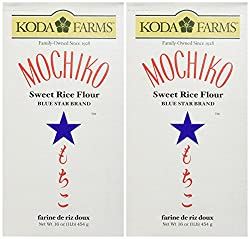



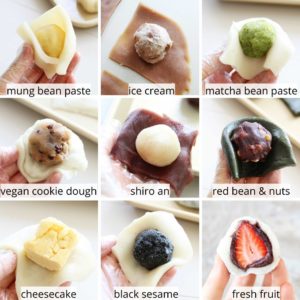
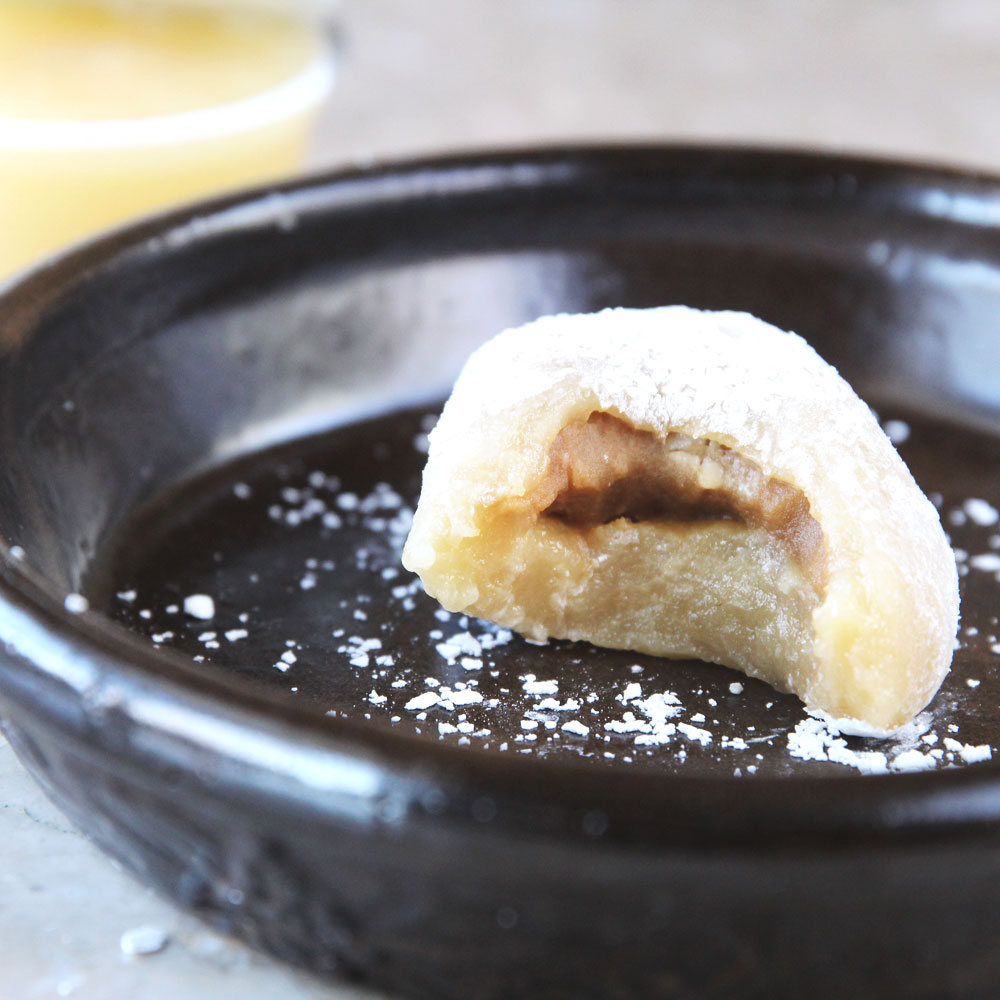
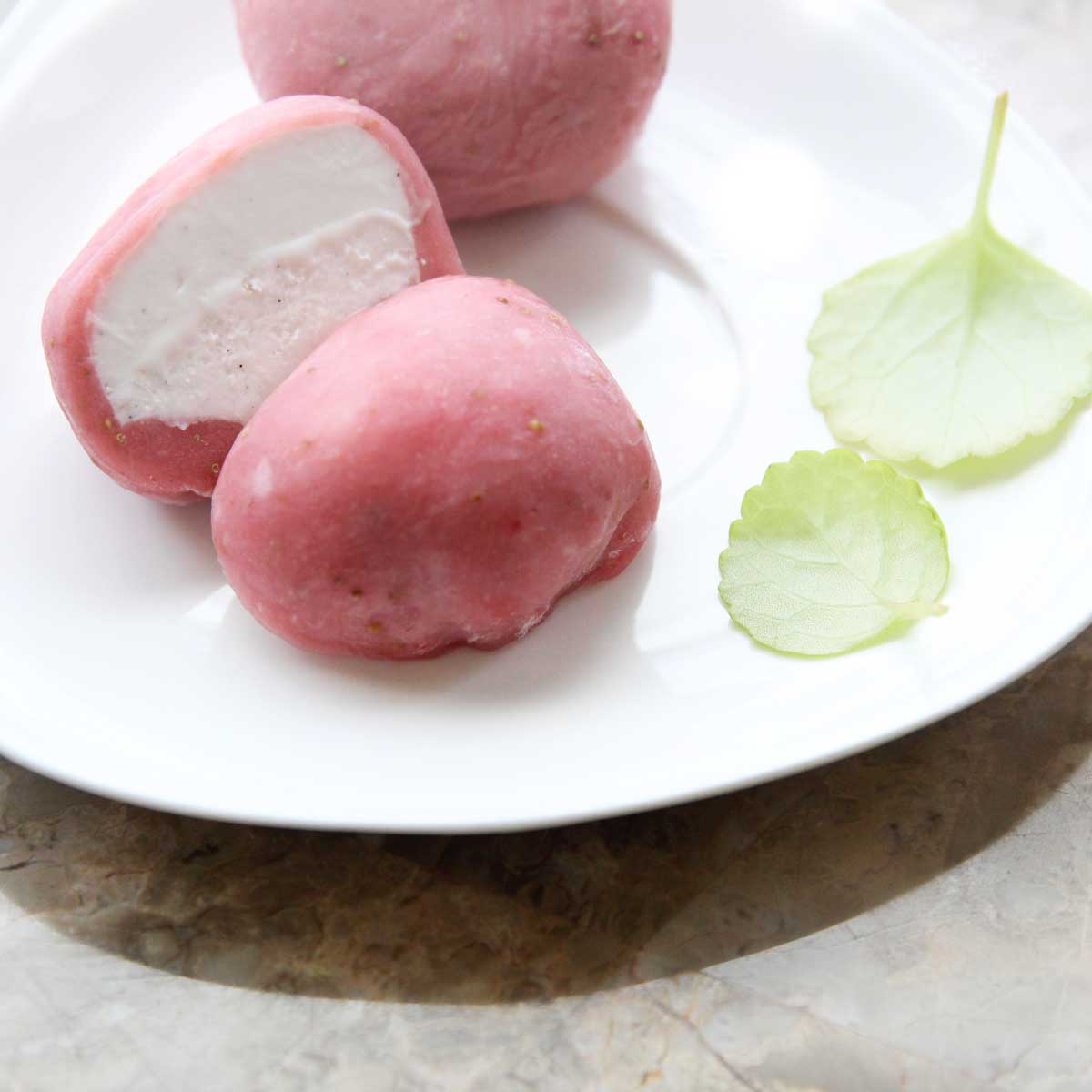
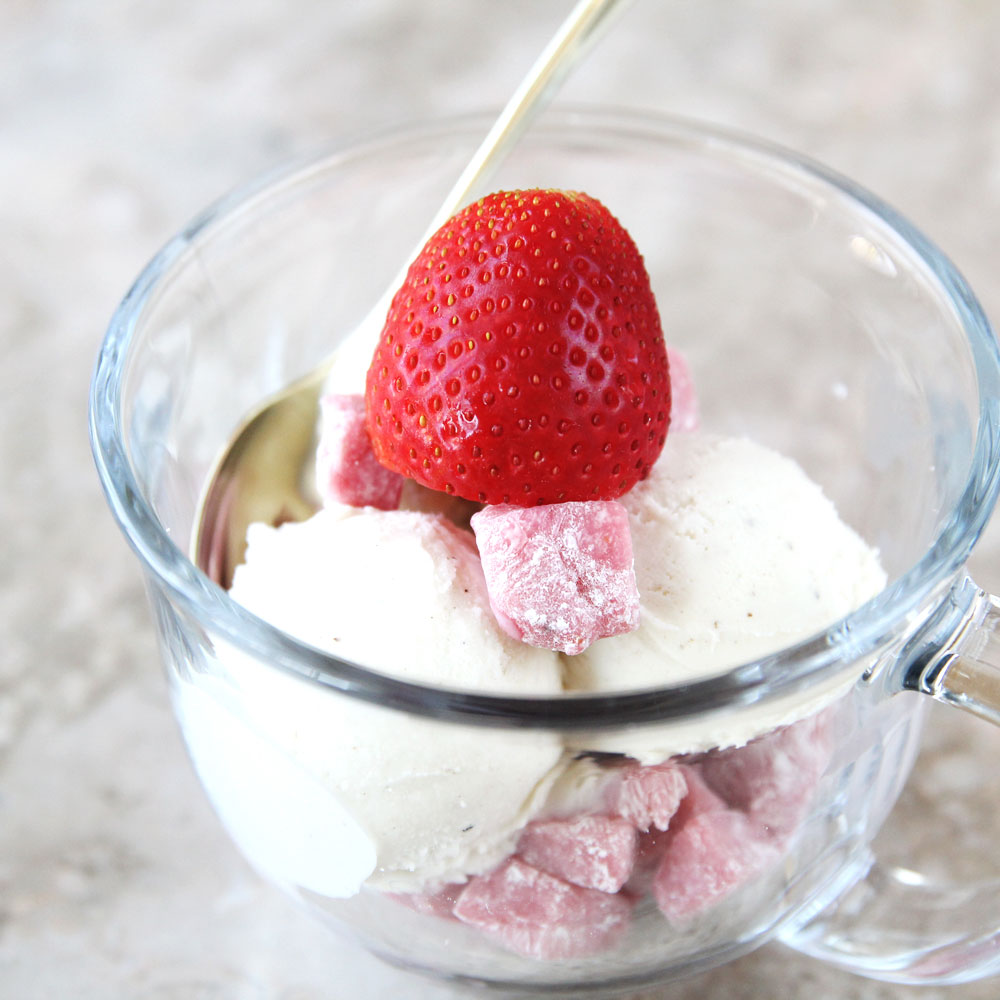
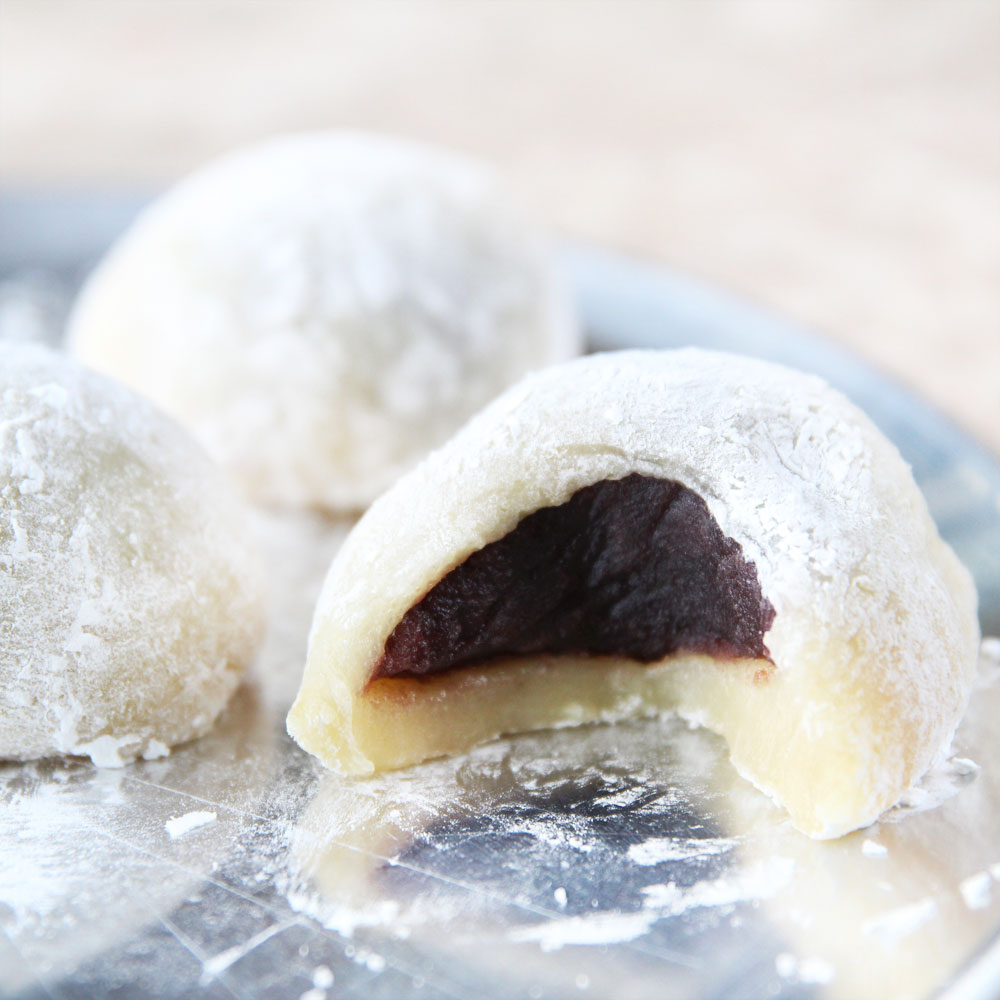
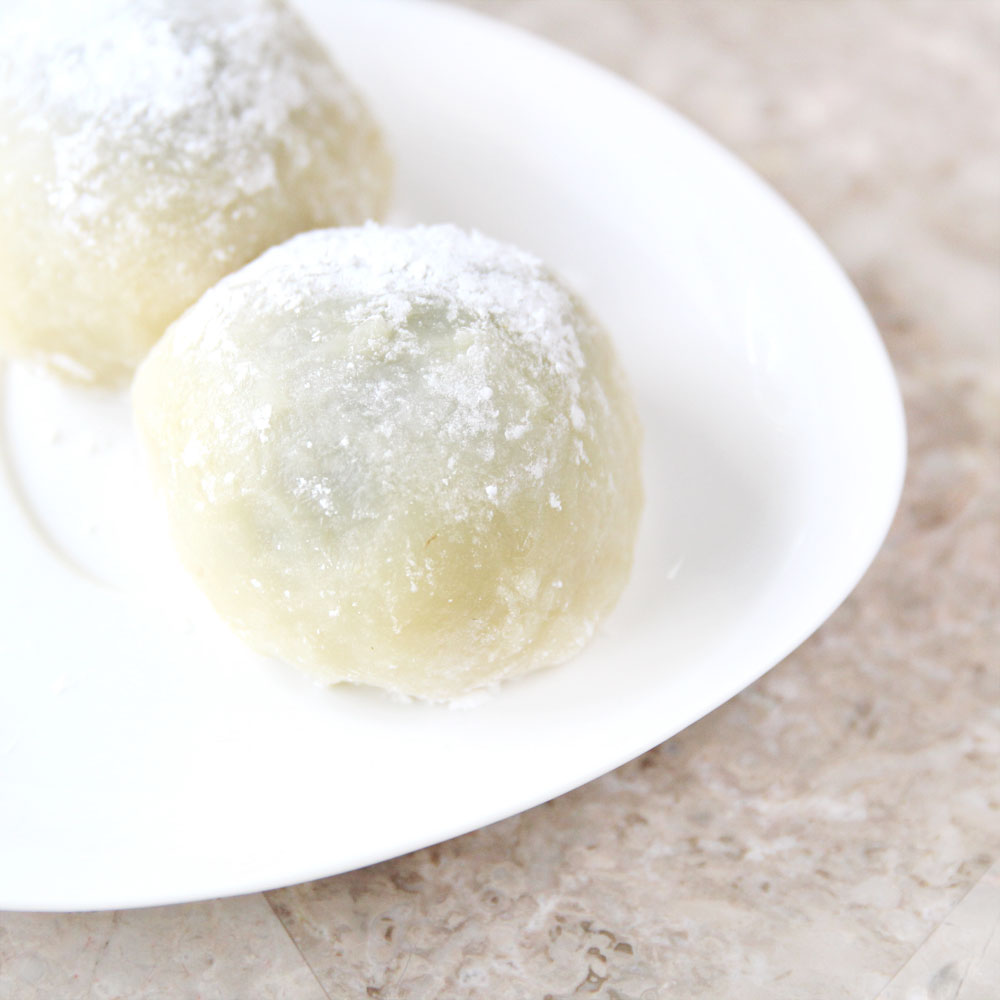
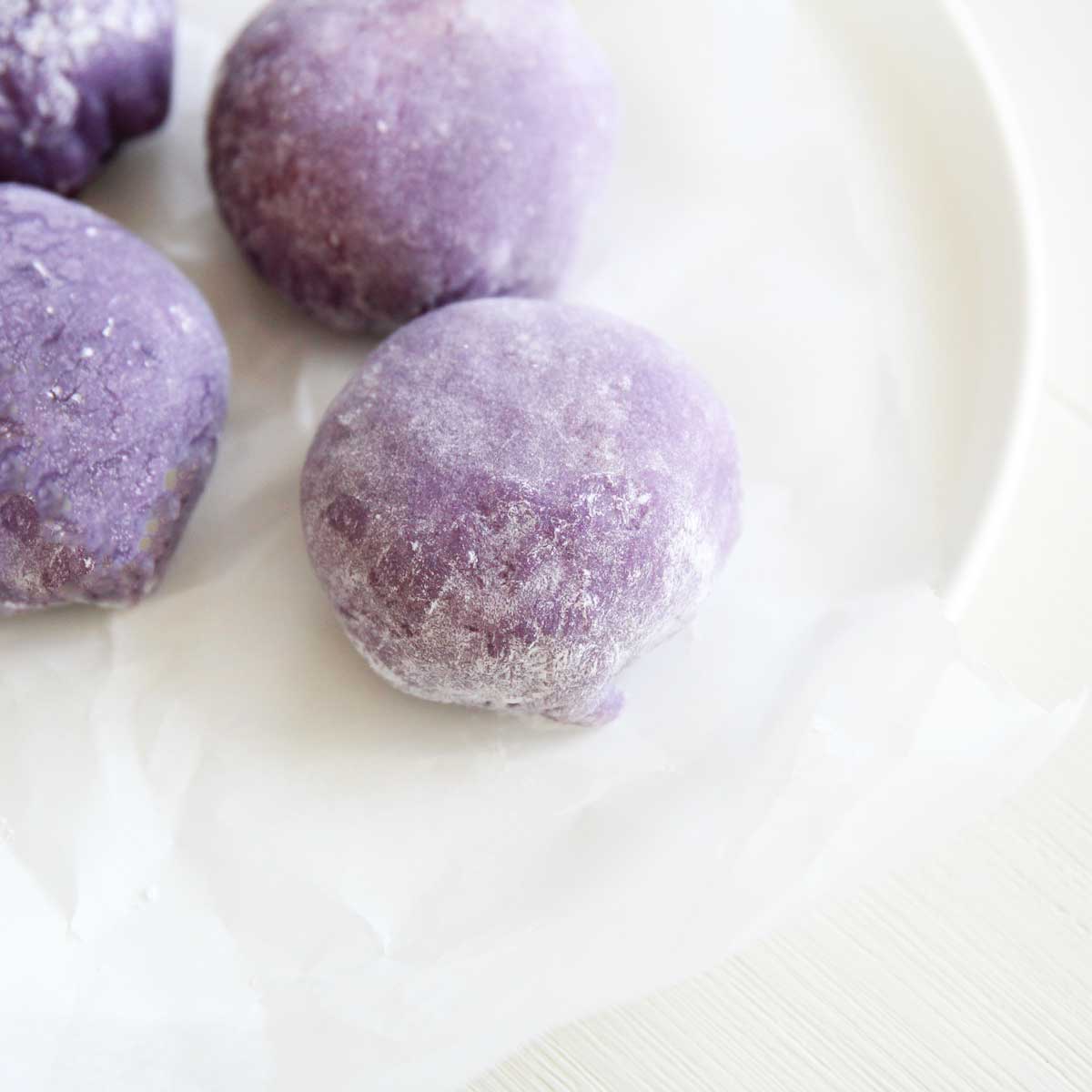




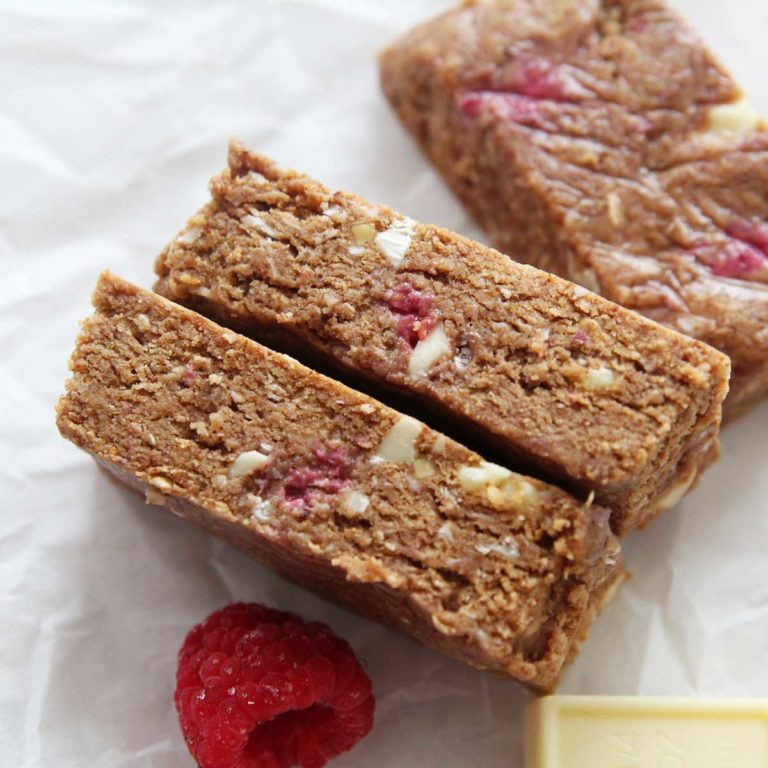
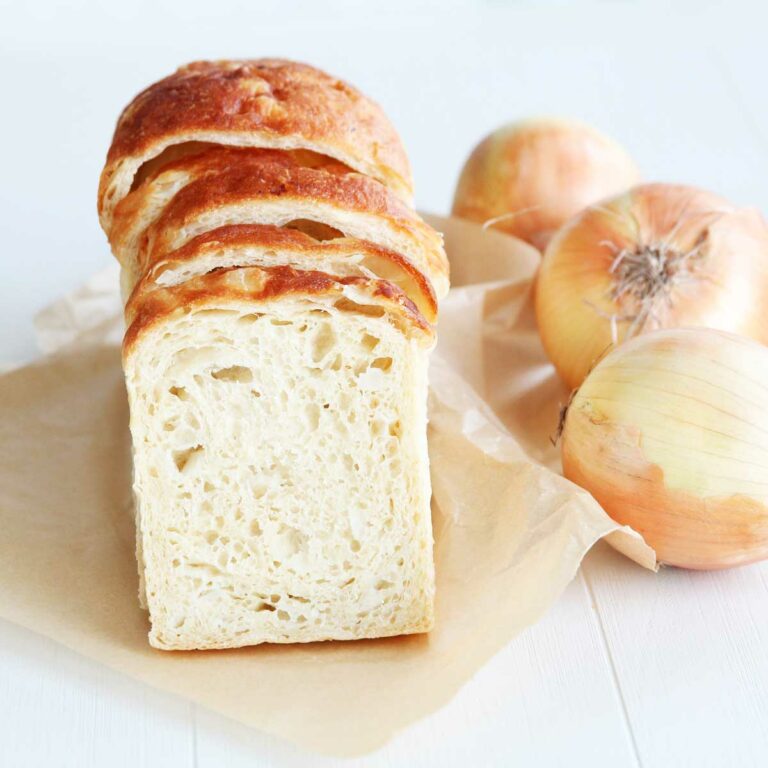
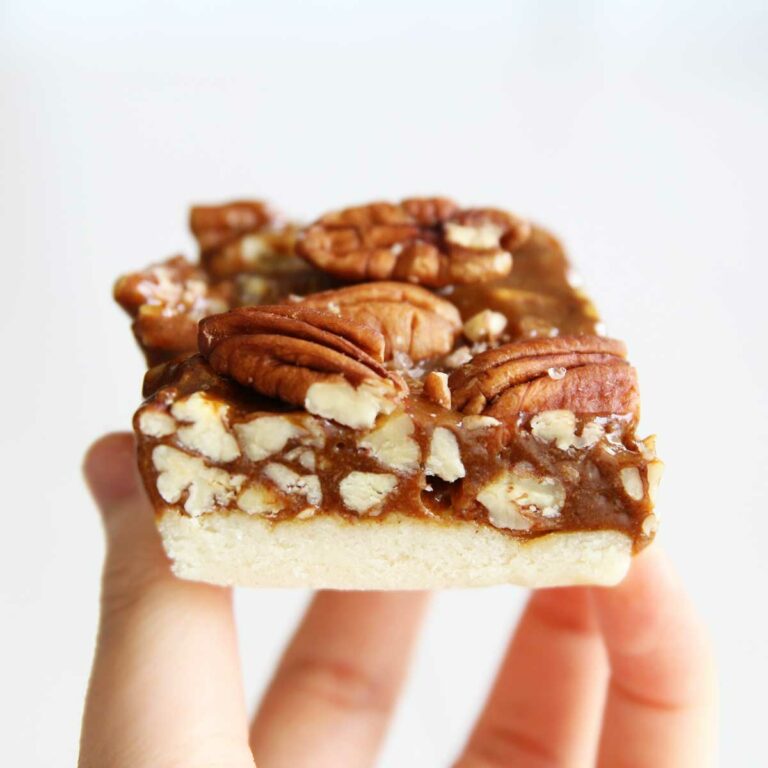
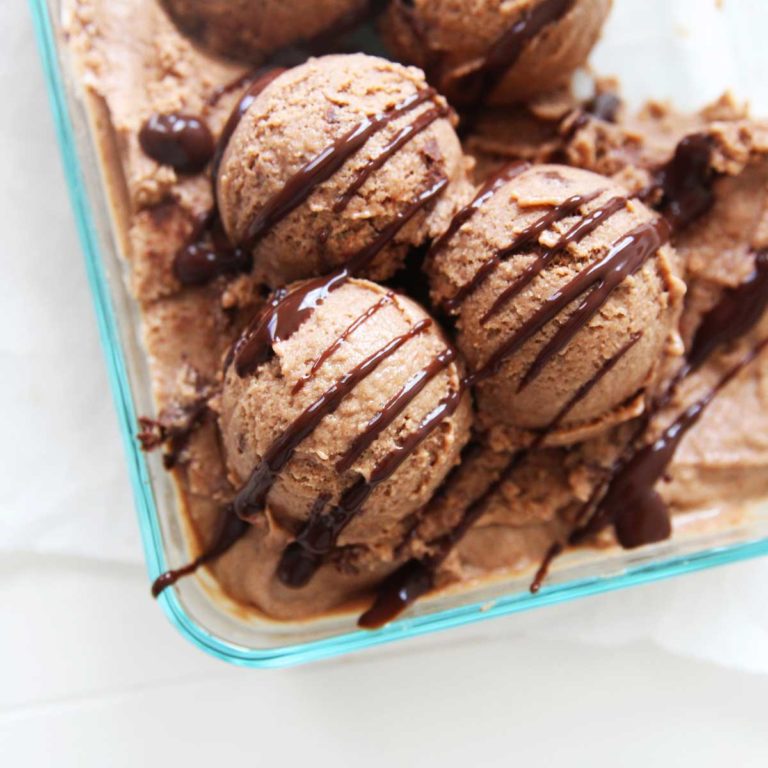
Leave a Reply